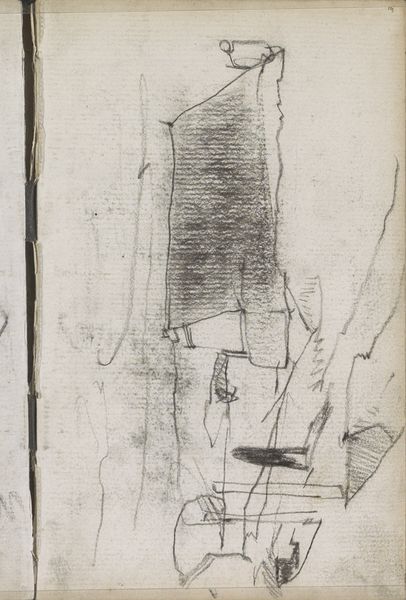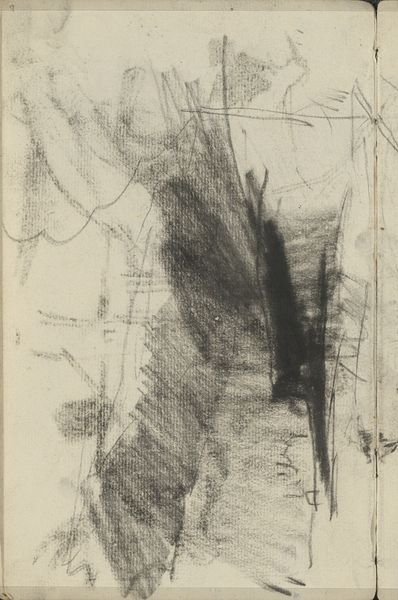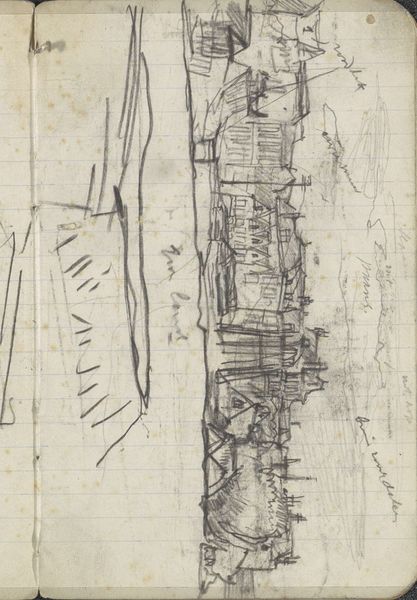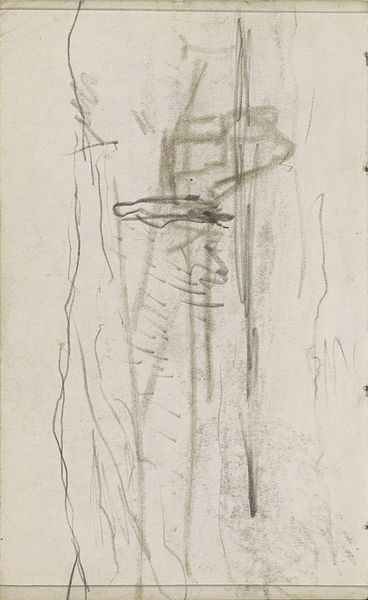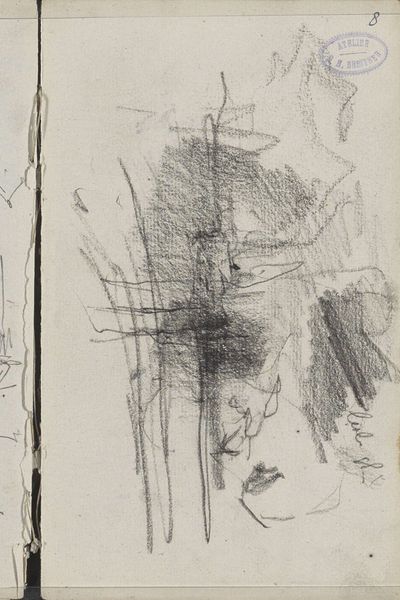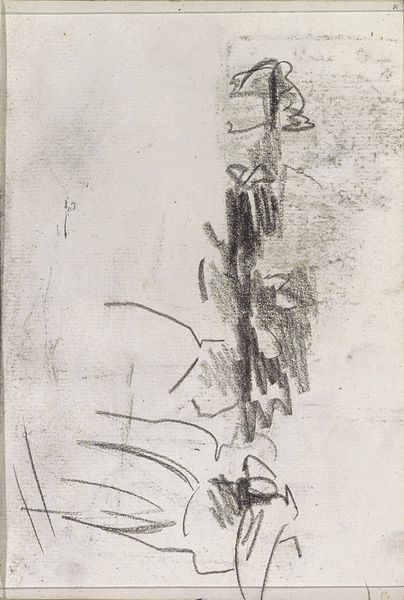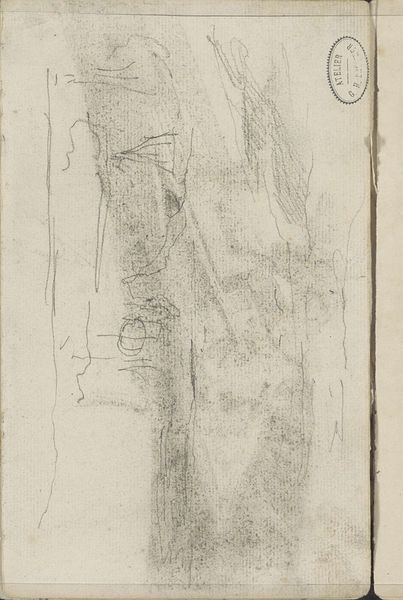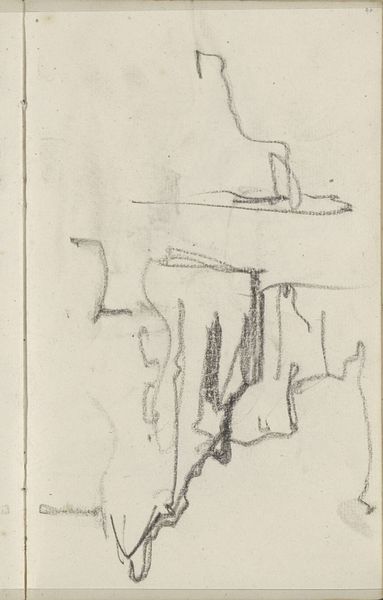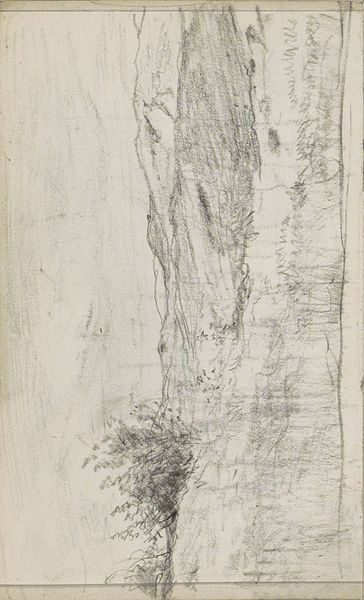
drawing, paper, pencil, graphite
#
drawing
#
impressionism
#
pencil sketch
#
landscape
#
paper
#
pencil
#
graphite
Copyright: Rijks Museum: Open Domain
Editor: This is "Landschap met figuren," or "Landscape with Figures," created by George Hendrik Breitner between 1884 and 1886. It’s a pencil and graphite drawing on paper, and it feels almost like a fleeting glimpse, like a memory fading at the edges. What stands out to you most about its composition? Curator: Its arresting feature lies in the contrasting treatment of form. Note the confident, almost brutal application of graphite in the depiction of what appears to be a structure, sharply juxtaposed with the ethereal, loosely defined figures flanking it. Observe the use of negative space to articulate the figures, allowing them to emerge, wraith-like, from the ground of the paper. The interplay is what arrests my vision. Editor: So you're focusing on how the figures seem unfinished, while the building, or whatever it is, has more defined lines. What does that contrast suggest? Curator: The variance invites speculation. Consider how the stark lines of the structure suggest solidity and permanence, while the vagueness of the figures embodies ephemerality. The figures seem secondary to their material surroundings, almost like an afterthought, thus creating a visual dialogue between transience and permanence. Do you agree that the eye is directed, perhaps forced to attend to, this structured application of pigment? Editor: I see what you mean, and the density of the graphite is much heavier. Now that you point it out, it almost seems like the figures are there to reinforce the solidity of the structure, not the other way around. Curator: Precisely! Breitner masterfully manipulated the properties of the medium to create a push and pull within the pictorial frame. An economy of means deployed to convey such potency is rather remarkable. Editor: I didn't think about the drawing's lines playing with the tension between what's solid and what’s fleeting. That's such an interesting approach to reading the artwork, focusing solely on its form. Thanks for that insight. Curator: A pleasure. Close visual inspection yields boundless readings.
Comments
No comments
Be the first to comment and join the conversation on the ultimate creative platform.
